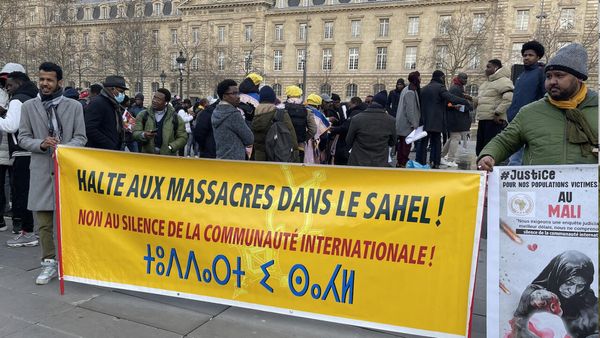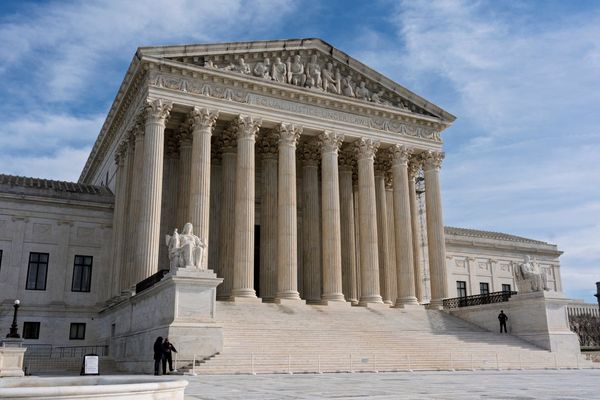
As tragic as it was, the terrorist attack in Vienna on Nov. 2 was not a major surprise for Europe’s counterterrorism experts. The events in Vienna and, a week earlier, in the French city of Nice have only brought back onto the radar of the general public a phenomenon that the European counterterrorism community knows well: The threat has never disappeared.
The terrorist threat is certainly less acute than it was in the years 2014-2017, when, spurred by the sirens of the Islamic State, European jihadis struck the continent regularly and sometimes with devastating attacks. But the European jihadi scene has certainly not evaporated.
The threat is multifaceted: There are lone wolves as well as small cells of self-radicalized sympathizers and jihadis who come from outside Europe to strike. (The Vienna attacker was a mix of the two dynamics, as he came from a transnational milieu of Islamic State sympathizers but acted alone when he carried out the attack.)
In the case of Vienna, an additional frustrating dynamic seen time and again throughout Europe over the years also seems to be at play. The perpetrator had recently been convicted in Austria of trying to join the Islamic State, served only part of a short sentence, and was released early. His early release and obviously loose post-release monitoring will unquestionably be scrutinized in the weeks to come (and have already led to the head of Austrian intelligence stepping down). But they are symptomatic of the difficulties European authorities experience in keeping tabs on radicalized and potentially dangerous individuals due to both the large number of suspects and the many legal and bureaucratic challenges that constrain them.
It is also not overly surprising that Austria has been hit. Beyond the cliché images of a placid Alpine country with a capital that regularly ranks first in the world’s quality of life rankings, in recent years Austria has faced high levels of jihadi radicalization. Tellingly, the number of foreign fighters who left Austria to join the Islamic State (as many as 300) is one of the highest per capita in Europe. It is home to a large and sophisticated jihadi scene, historically created by Arab militants who have found refuge in Austria since the 1980s. A prominent product of this scene was Mohamed Mahmoud, the son of an Egyptian Muslim Brotherhood refugee in Vienna who started some of the first online jihadi platforms in German before joining the Islamic State in Syria and dying in a U.S. airstrike.
Over time, reflecting Austrian migratory flows, militants from the Balkans and Chechnya have come to dominate the country’s jihadi scene. In Graz, Austria’s gateway to Eastern Europe, and in other Austrian cities, a Salafi scene dominated by Bosnians, Kosovars, Albanians, and Macedonians has worried authorities for years and has produced a high number of radicalized individuals.
The flow between Austria and the Balkans is constant and involves militants, radical preachers, extremist literature, funds, and weapons; there are also frequently ties to Albanian organized crime networks. Equally concerning is the problem of radicalization of some segments of the Chechen diaspora, with ample connections to both organized crime and mixed martial arts gyms (a passion shared by the Chechen youth who beheaded the French teacher Samuel Paty in October).
Austrian counterterrorism policy, despite some notable successes, has historically been quite toothless in facing this relatively large and sophisticated threat. Problems include limited staff resources, legal difficulties in deporting foreign militants and dissolving extremist organizations, and, as the case of the Vienna attacker showed, very short sentences for convicted terrorist group members.
That is not to say that the current Austrian government, led by Chancellor Sebastian Kurz, has not been aware of the problem of radicalization and, more broadly, Islamism. To the contrary, over the last few years Kurz and his party have made confronting Islamism, in both its violent and nonviolent manifestations—which they see as strictly interlinked—one of their policy priorities.
In many ways, Kurz was a precursor to French President Emmanuel Macron. Kurz has been proclaiming for years what the French president has been attracting attention for saying about “Islamist separatism” in recent months. From the general vision of Islamism as a mortal threat to the democratic life, integration, and the social cohesion of the country, down to specific concerns about foreign funding of domestic Islamist networks and the influence of Islamists in the education system, Macron and Kurz sing from the same hymn sheet. The difference is that Kurz, having been in power longer, has already enacted some tangible measures.
In 2015, for example, Austria passed important revisions to the Islamgesetz, the 1912 law that regulates the relationship between the Austrian state and the Muslim community. The text, drafted largely by the Ministry for Europe, Integration, and Foreign Affairs, over which Kurz presided at the time, reorganized the criteria for the appointment of imams and forbade foreign funding of Islamic institutions. Under Kurz’s leadership, Austria introduced a law banning the symbols of the Muslim Brotherhood, began procedures to shut down several extremist mosques and expel various imams, and created a permanent Observatory on Political Islam.
It is against this backdrop that, in the wee hours of Monday morning, Austrian security services conducted a large-scale operation against more than 70 individuals and several organizations allegedly linked to the Muslim Brotherhood in the country. In this operation, which is not connected to the Vienna attack, Austrian authorities are going after the bulk of the Islamist infrastructure in the country, alleging a series of wrongdoings that range from financial irregularities to terrorism support.
Austrian authorities, like Macron, are clear in distinguishing between jihadism and political Islam, which they see as two problematic but distinct phenomena. But, at the same time, the proposition that the latter, with its polarizing and victimhood-focused narrative, creates a fertile environment for the former is increasingly accepted by policymakers and practitioners in both countries.
The attack in Vienna shocked Austrians, who have not become accustomed to brutal terrorist attacks like the French sadly have. But it is likely that the events in Vienna and France will only strengthen the resolve of both countries’ leaders to challenge all forms of Islamism—irrespective of the backlash that this inevitably triggers. Yet this is the biggest obstacle both Kurz and Macron face moving forward. Their aggressive posture has received widespread and cross-party support in their countries, and other European leaders are increasingly looking at them with interest. But, predictably, they have also attracted criticism.
Some objections, coming from known Islamist actors and supporters, can be fairly easily dismissed. But there are broader and more justified concerns that ordinary Muslims, in Austria as in France, might perceive the words of Kurz and Macron as being not against jihadism and Islamism, as the two leaders insist they are, but, rather, against Islam and their Muslim identity.
The goal of undermining extremists—whether violent or not—can only be achieved if the silent majority of Muslims support the effort and do not see themselves as targets.







